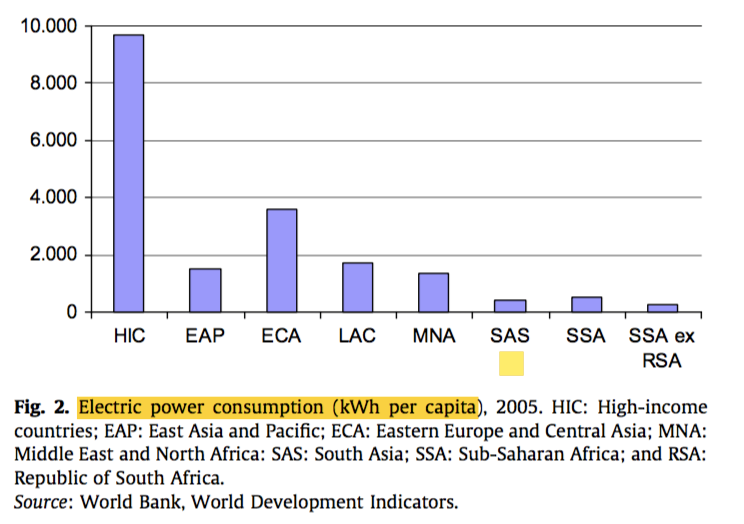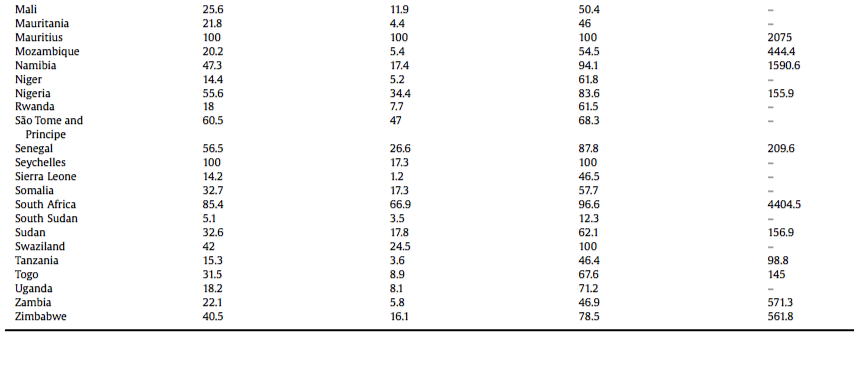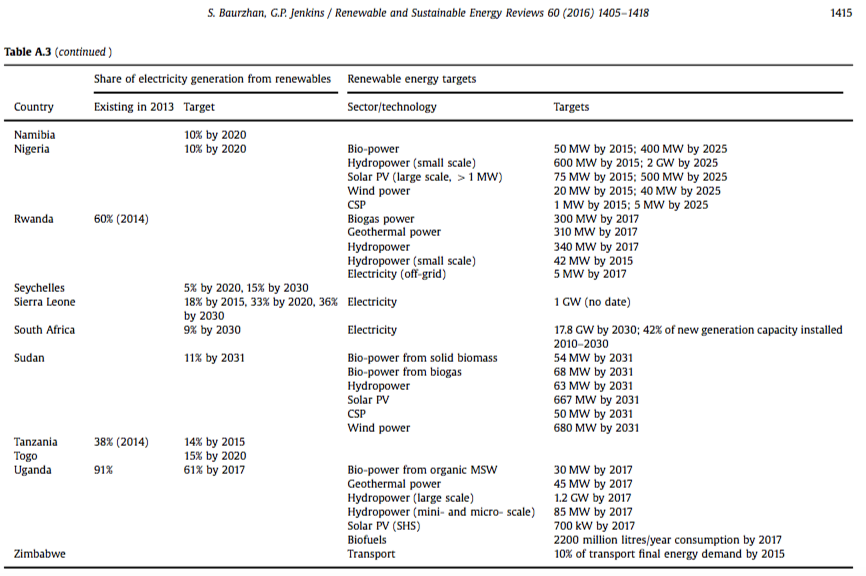İlim ve Medeniyet
Yeni Nesil Sosyal Bilimler Platformu
History and Introduction to the Solar PV Technology
The solar photovoltaic energy is a renewable energy source enabling semiconductor silicon-based solar cells to generate electricity from sunlight. The solar PV system is composed of three main components : solar panels producing electricity from sunlight , Solar charger and inverter enabling regulation of produced Direct current and changing it to the alternative(220 Volt) or industrial voltage (380 Volt) to make use in home or industrial appliances in the offgrid systems and Solar battery storing the energy for nighttime or over-consumption time.
The Photovoltaic effect was analysed since the early 1850 but the academical discovery of its existence dated back to 1905 when Albert Einstein published his article on the possible way to generate electricity with interaction of photons and semiconductor silicon cells. The first industrial application was in Cairo for solar irrigation at the Nile Delta. The technology usage was restricted to the space program between 1940-1970 due to the high cost for produce solar cells as Wafer form of silicon semiconductors and low effiency rates of the produced solar cells.
The widespread usage of Solar PV Technology was supported by two main factors: the political implicatios of 1970 Oil Crisis and environmental sensitive and energy source diversification oriented Western governments. Oil producer Middle Eastern countries have implemented input restricting measures to European and American countries in response to the Israelian invasion in the Palestinian lands and this has consequenced in fossil fuel price increase and apparition of political and economical energy security concern vis-a-vis the control of fossil fuels by the Arab countries. European countries have established preventive measures : France and USA have implemented nuclear energy focused energy market development while especially environment sensitive German citizens encouraged in favor of more risk-free and clean energy sources such as Wind and Solar PV Technology. Since the energy production from these new alternative resources are expensive than incumbent technologies, this countries have initiated programs to incentivise the widespread usage of Solar PV Technology. 100000 solar home program in Freiburg(1) was an example for this early incentive programs. However since the levelised cost of electricity was higher than incumbent technologies like coal or nuclear energy, the main applications were limited to the remote areas without electricity grid and not feasible in case of the construction of the new grid due to the various reasons as geographical fragmentated nature of consumers, geographical overdistance and low energy Consumption. This has necessitated States to start grant or financing facilitating programs in India or China. On the other hand, German-led European countries have adopted feed-in tariffs(2) by which household consumers , enterprises or investors can build solar rooftop or ground mounted solar PV installations and sell the electricity generated by the approved solar PV systems into the grid at a price equivalent to the cost of the system and reasonable profit for the investors.(3) The countries have promised to buy the electricity generated from feed-in tariff for a long period such as 10-25 years to ensure the investors a viable income to facilitate the financing and widespread usage of the solar PV systems. The alternative measure was net metering where the energy consumer can install in his home or enterprise and the reduce the amount of the generated electricity from solar PV system each month from the household or enterprise energy consumption to save from electricity bills.This measures were accompanied with another motivators such as tax rebate on investment , reduced Value Added Tax , reduced corporate income tax , accelerated depreciation.(3) Until the Financial Crisis of 2008 , feed-in tariffs and tax programs have helped to a rapid rate of Solar PV installations in the Europe and USA. However, European countries have experienced public financial deficit and find it necessary to reduce or cut the incentives for solar PV system installation to diversify their energy portfolio and invest in local Solar PV equipment to reduce the production costs and gain competitive advantage in this new technology. USA has put off his focus on solar PV Technology since the shale gas discovery has offered dramatical advantage for electricity production while European countries have adopted restrictive measures such as limiting yearly new installations capacity in Spain in 2008 or in 2011 for Czech Republic. (4) This period was marked by the advancement of Chinese PV Industry grace to huge island demand for this technology, government backed programs for the new installations and Solar PV production firm development and relative weakening condition of European and American companies due to the Financial Crisis both affected from falling inland demand and financial condition.This phenomenon has consequenced in the development of Chinese PV Industry in leader position for manufacturing capabilities. During the after 2008 period , Chinese PV solar exports to the European and American markets have risen dramatically. This was responsed back by anti-damping laws or import tariffs in Europe in 2014 and later USA in 2016.Especially European countries have decreased their high feed-in tariffs since they were not willing to incentivise Chinese solar PV firms which have got market advantage with inland huge volume demand and dramatical price decreases with technology advancement with high feed-in tariffs only adjusted to the inflation.(5)Germany has decreased in %40 feed-in tariff in 2012 for new installations while Greece and Bulgaria have implemented feed-in tariffs reductions for incumbent systems resulting in investment insecurity for solar PV systems.
Rural Electrification Projects in the World and Solar PV Applications
Rural Electrification is the Electrification of remote areas in the least developed countries with solar, wind or diesel generator based home or minigrid systems.
These projects are concentrated in areas with low electricity Consumption per capita. According to the World Bank Development Indicator on electricity Consumption per capita, Sub Saharan Africa and South East Asia are the target regions. (6)

 The Solar PV Applications in the Least Developed Countries
The Solar PV Applications in the Least Developed Countries
 Solar PV Applications are widespread used in least developed countries since the current electricity grid infrastructure is weak and distributed systems where solar PV systems, producing electricity at the place of energy consumption without grid investment , are offering low cost problem solving solutions. There are four types of Solar PV Applications in these countries : small-pico systems , Solar home systems , institutional PV systems and minigrid projects.
Solar PV Applications are widespread used in least developed countries since the current electricity grid infrastructure is weak and distributed systems where solar PV systems, producing electricity at the place of energy consumption without grid investment , are offering low cost problem solving solutions. There are four types of Solar PV Applications in these countries : small-pico systems , Solar home systems , institutional PV systems and minigrid projects.
Small pico systems are designed for energy supply for lighting and mobile phone charge. The target group are private consumers : farmers need mobile phone to constantly ask food price in the market rather than travelling to the market with motocycle. Lighting is serious problem in especially Sub Saharan African countries where the alternative Is lighting candle with kerozene and benzene which takes lot of time to prepare everyday and the kerozene(the required oil) is costly for continuous Consumption. Solar panel fills the batteries without outer handling and it does not require significant maintenance costs or fuel.
Solar home systems are required to home consumers in remote areas where household consumers geographical location are fragmentated or distant and constitute low energy demand therefore unique systems for home are better than minigrid systems. This system is distributed for a specific location's(village or district) population and supplies energy for home appliances like mini refrigerator, Tv and lighting.
Institutional systems are required for non-electrified areas to the continuity of public services such as school, clinics(7), administration building or police. This buildings were using diesel generators but generators require expensive regular maintenance and fuel as operating cost. These factors enable solar PV products to be more feasible since they do not require significant maintenance and operating costs and the high initial investment cost becomes relatively insignificant.
Minigrid system are mostly preferred for remote rural areas with a certain degree of concentration enabling to operate independent energy production with diesel , Solar or wind power producing and local electricity distribution systems for home or enterprises.
Challenges
There are several challenges for solar PV installations in Sub-Saharan Africa . Solar PV Technology is very costly for this region. Also, undeveloped infrastructure requires higher maintanence costs. Technical expertise is also required for the long term use, whereas lack of expertise is another obstacle for running the plant. Lastly, lack of governmental will and policy inconsistencies are existing in some countries. Therefore, even World Bank and United Nations Developement Program, Global Environment Facility and governments are willing to make some developments in solar PV rural electrification field in develooing countries could not be much successful and failed in making huge positive impacts in social and economic life of people. (C. L. Azimoh & C. Mbohwa , P. Klintenberg & F. Wallin, 2017). Also, as Sy and Copley claim that According to a recent survey of private sector investors (IICA 2013), the biggest obstacles to investing in African infrastructure are, project feasibility;country, political risk; profitability; and the legal regulatory environment.
Solar PV Rural Electrification Project Examples
According to Sy and Copley (2017) about 620 million people are suffering from energy access problem in Africa and the total estimated need for Africa’s energy infrastructure is US$ 63 billion in 2013, and of nearly US$ 6 billion have been invested including domestic finance (nearly %50), Private Participation in Infrastructure (PPI), Official Development Finance (ODF) and Chinese investments by 2013.
In this study, there will be given three examples showing the positive results of mini-grid, photovoltaic electrification and solar home photovoltaic systems to social life as well as economic development in different countries which are Namibia, Ghana and Fiji.
In the first example, according to the article (2017) Tsumkwe village where around 3800 people live has been taken into consideration. As seen on Figure 1 below, the place is located at the north east of Namibia, where far from the national grid. Basic issue related to the alternative energy in the city is that the nearest power lines are far from the city, required energy distribution center is at Tsumeb as seen below about 300 km away. Its estimated budget is around US $15 Million. The overall picture is showing how difficult situation for people even to reach to electricty with the low cost in the Tsumkwe.
A hybrid mini-grid system Project was initiated with the support of European Union (EU), the Desert Research Foundation of Namibia (DRFN) in collaboration with the European Commission (EC), NamPower and the Otjozondjupa Regional Council (OTRC) in 2008 and was completed in 2012 with the budget of US$3 million. During the 5 years process after the project completed, public people claimed that social and economic life has been improved. For example, safety has increased with the street lights, students could study longer hours at the night, home appliances like refrigerators could work 24 hours per day and provided storage for foods, did not need for firewood during winter and increased visibility helped to crime prevention. Lastly, storing vaccines and medical equipment could be stored. Furthermore, drinking places could work for 24 hours a day and people could either venture new business or expand its existence business by providing some services depending on electricity such as LPG, fuel stations and ATMs.
Second example is given from Ghana, according to the article (2010), focusing on public solar photovoltaic electrification projects as alternative renewable energy system enhancing the rural micro-enterprises that are the locomotive of the Ghana economy. Solar photovoltaic system helps people to work after sunset as it storage the energy in the sun. Also, as it generates energy, can provide lower price after set-up fee. According to the claims (2010) of 37 solar-electrified enterprises and 39 non-electrified enterprises, the study resulted that in off-grid rural communities, some costs are lowered by using public solar PV lighting because they used to use kerosene lanterns before PV. Also, Grocery enterprises using solar PV begun to work after sunset as well, and it led them to earn more daily income around US$ 5 – 12 compared to those without. Also, all indicators & assumptions from the study can be seen below on Table 2.
Third example is given from Vanue Levi island of Fiji located in South Eastern Asia, for showing the contribution of solar home system (SHS) to social life. According to Urmee and Harries (2012) “Solar home system program provides electricity, primarily for lighting, for remote households located in rural areas where supplying electricity via the grid is not feasible.” Fiji government provides incentives as %90 of capital cost for any kind of electrification projects. Vanue Levi has more than 100 islands, therefore, they also had difficulty provide electricity to households. Alternative to solar home systems, there are two other options in the fields, which are main electricity grid and a diesel or a renewable village power supply system. But according to the households living in rural environment using SHS say that it improved their opportunities to engage each other in social life, for instance, they could come together in churches under clean light. Also, some claimed that their spending time for study increased. Most females claimed that they work less during the day because they used to spend much time to clean and refuel kerosene lanterns in the past. As specialist say that SHS should be less costly compared to kerosene lanterns, most of the public people in Vanue Levi attending the survey did not accept this claim.
Conclusion
African continent and developing Asia needs to get more support and investment from international institutions and developed countries from Europe, America and China in the alternative energy installation sector. More than billion people in the world are suffering from lack of electricity. Solar PV Technology is a good alternative for those least developed countries as seen in the examples above.
Muhammed Enes USLU
Erhan HAMZAKADI
REFERENCES:
1- Timilsina. 2011. Solar Energy: Markets,economics and development
2- Utility-Scale Solar Photovoltaic Power Plants IFC Guideline 2013
3- Rodriquez. 2015. Economic Feasibility Analysis of Small Scale Pv systems in different countries.
4- Sahu. 2014. A Study on global solar PV energy developments on top ten Solar PV power producing countries
5- Leepa. 2012. Effects of a cut-off in feed-in tariffs on PV capacity. Germany
6- Deichmann U., 2010. The Economics of renewable energy expansion in rural Sub-Saharan Africa.
7-Azimoh C. L. & C. Mbohwa , P. Klintenberg & F. Wallin. 2017. REPLICABILITY AND SCABILITY OF MINI-GRID SOLUTION TO RURAL ELECTRIFICATION PROGRAMS IN SUB-SAHARAN AFRICA: TSUMKWE, Namibia. University of Johannesburg, Faculty of Engineering and Built Environment
8-Baurzhan S., Jenskins,. 2016. G. Off-grid solar PV: Is it an affordable or appropriate solution for rural electrification in Sub-Saharan African Countries?
9-Hansen U.E., Pedersen M., Nygaard I., 2014. Review of Solar PV Market development in East Africa.
10-Obeng G.Y. , & H.D. Evers. 2010. IMPACTS OF PHOTOVOLTAIC ELECTRIFICATION ON RURAL MICRO-ENTERPRISES: Ghana. Center for Development Research (ZEF), University of Bonn
11- Sy A., Copley A. 2017. Closing the Financing Gap For African Energy Infrastructure: Trends, Challenges and Opportunities. Africa Growth Initiative at Brookings.
12-Urmee T., & D. Harries. 2012. The solar home pv program in Fiji– a successful resco approach? University of Western Australia.
Yorum Yaz